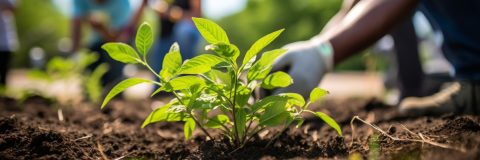Sustainability activities for the whole family
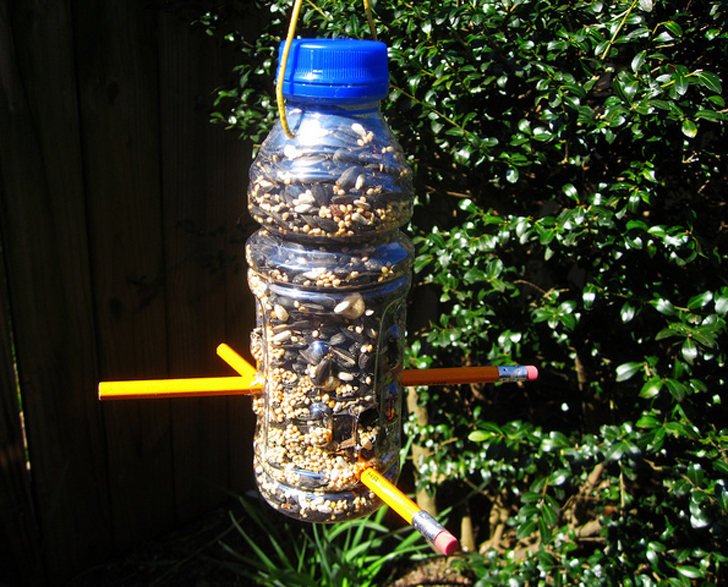
1. Create a recycled bird feeder
Teaching kids about sustainability and caring for the environment is very important. One fun way to do this is by making a recycled bird feeder. It helps reduce waste by reusing plastic bottles and brings nature closer as wildlife comes to your garden.
Here’s what you’ll need:
1. Small, used plastic bottle
2. Thin stick found from park or woodland/pencils
3. String or wire
1. Preparing the bottle
To get started, gather a clean, empty plastic bottle – a drink bottle or a milk bottle works well. Using scissors or a craft knife, carefully cut a large hole on one side of the bottle. This hole should be big enough for small birds to access the birdseed inside.
2. Drainage holes
Next, flip the bottle over and create several small drainage holes in the base using a sharp tool. These holes will allow rainwater to escape, preventing the seeds from getting soggy and mouldy.
3. Creating perches
Now, it’s time to add perches for the birds to comfortably sit and feed. Make small holes on opposite sides of the bottle and push a sturdy stick or pencil through them. These perches will provide a convenient resting spot for visiting birds.
4. Hanging the feeder
To ensure that the bird feeder is easily accessible to our avian friends and safe from predators, attach a string or wire around the top of the bottle. Make sure it is securely fastened to a tree branch, hook, or any other high point in your garden.
5. Adding birdseed
The heart of the project – filling the feeder with birdseed! Choose a high-quality birdseed mix that appeals to a variety of birds. Fill the bottle through the large hole you created earlier, making sure not to overfill it.
6. Finding the perfect spot
Choose a suitable location to hang your bird feeder. Ideally, it should be in a spot where you and your kids can easily observe the visiting birds from a safe distance. Make sure the location also offers some cover and protection for the birds.
7. Observe and enjoy
Now comes the best part – watching and waiting for the birds to arrive! Grab some binoculars and sit with your kids as you observe the different bird species that come to feast on the birdseed. This simple act of kindness towards nature helps promote biodiversity and gives kids an opportunity to learn about different bird species and their behaviours.
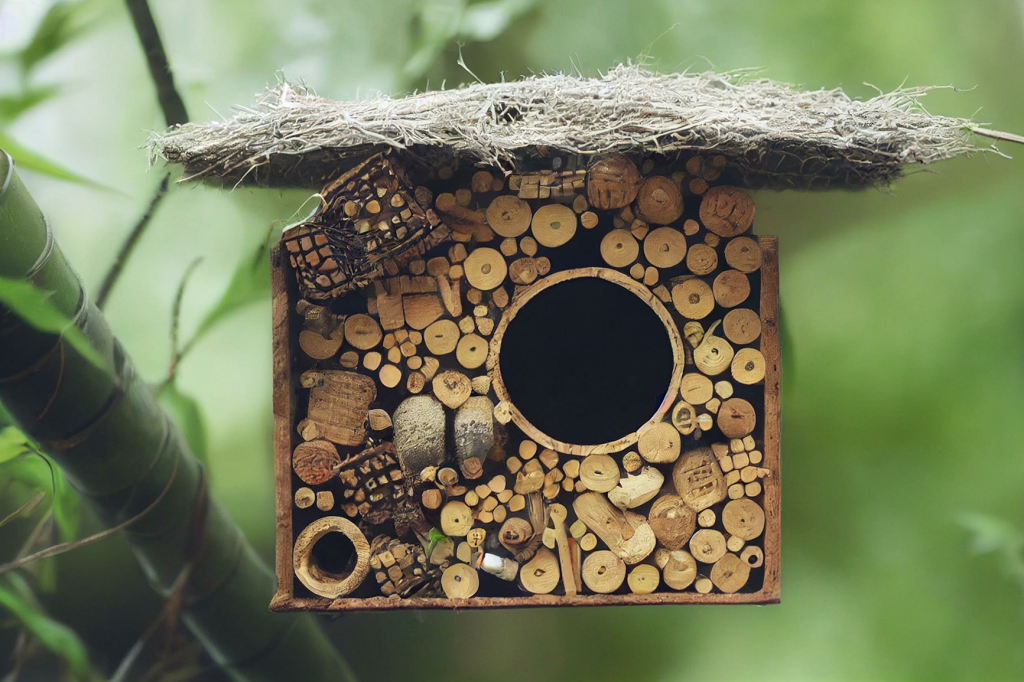
2. Craft a buzzing bug hotel
Explore the amazing world of bugs and insects in your own garden! Making a bug hotel is a fun DIY project that gives shelter to helpful critters. With plastic bottles, string, and natural materials, you can create a buzzing haven for them.
What you need:
– Large 2-litre plastic bottles
– Variety of sticks, pinecones and leaves from a park or woodland area
– Rope
1. Gather materials
Collect three 2-litre plastic bottles and cut them in half, creating six shorter segments.
2. Create connectors
Make two small holes on opposite sides of each bottle segment for threading string or rope through.
3. Assemble the bug hotel
Thread the string through the holes, connecting the segments to form a cylindrical bug hotel.
4. Build the hoop
Create a sturdy hoop to hang the bug hotel securely from a tree branch or hook.
5. Fill the bug hotel
Add natural materials like sticks, leaves, pinecones and bark to create cosy spaces for insects.
6. Welcome your new guests
Observe and enjoy as bugs and insects make your bug hotel their home.
Making a bug hotel from recycled materials is both fun and good for the environment. It gives a safe home to bugs, which helps keep our garden balanced and lets us enjoy nature even more. Happy bug-watching!
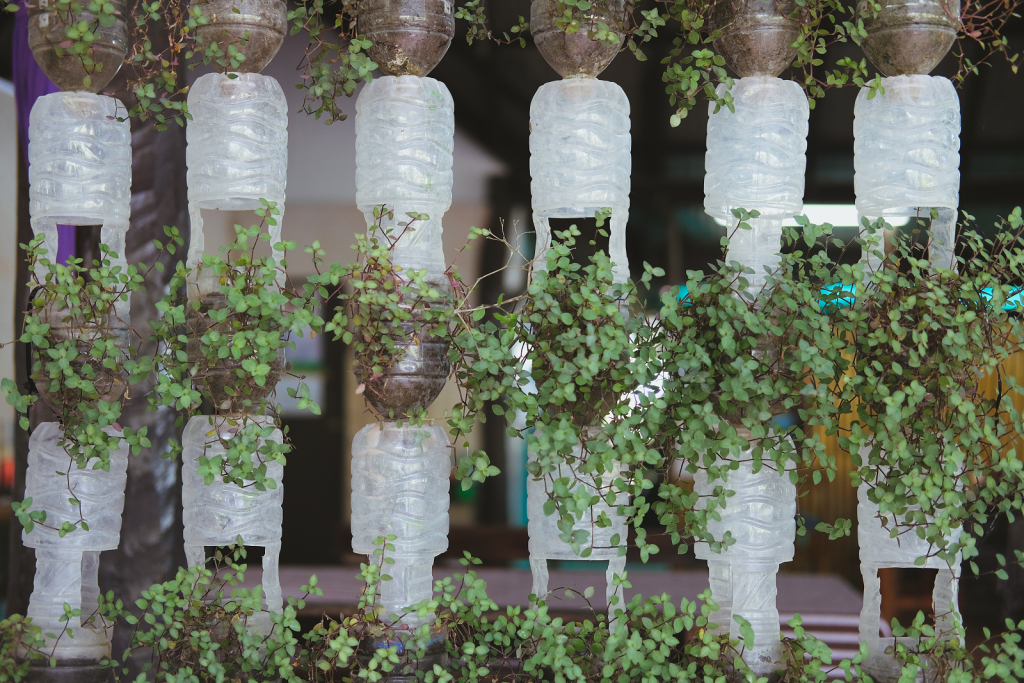
3. Grow a vertical bottle garden
Make a vertical bottle garden for a sustainable and space-saving home garden. It’s a creative system that has many advantages, like saving water by reusing it and growing fresh produce locally, which also saves money and reduces food miles.
What you need:
– 2 litre plastic bottles
– Screws and a drill
– Soil and seeds/plants
Method
1. Take some 2-litre plastic bottles and cut them 2/3 the way from the top.
2. Make small holes in the lids of the bottles for drainage.
3. Attach a bottles to a wall or wooden frame, with the lid at the bottom.
4. Attach further bottles directly underneath and create multiple vertical lines of bottles.
5. Fill the bottles with soil and add plant seeds.
6. Water the top bottle, allowing water to drip down into the bottles directly below.
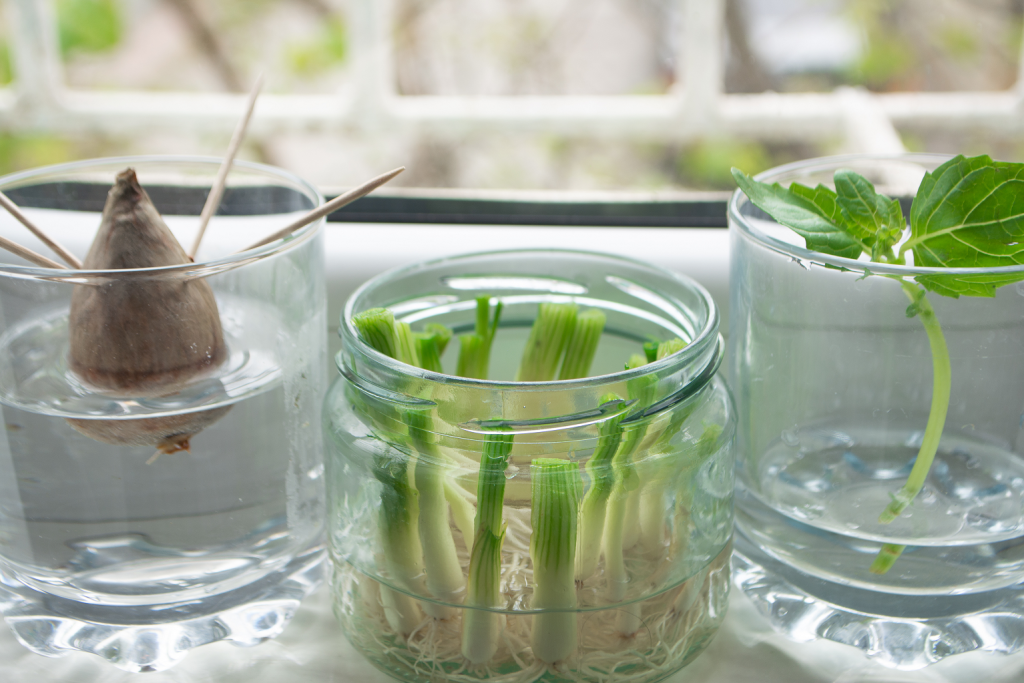
4. Re-grow vegetables from scraps
Try this fascinating and fun sustainability idea with your kids – re-grow vegetables from kitchen scraps! It’s an educational process that shows how small scraps can grow into thriving plants with some care and attention. Let their green thumbs flourish!
Many different vegetables can be grown from scraps:
For potatoes:
– Any chunky piece of potato peel or any piece of potato which contains an eye can be re-planted.
– First leave out to dry overnight.
– Plant in soil the next day, with the eye facing upwards.
– Water daily and wait for the potatoes to grow.
For celery, onion, garlic and similar plants:
– Take a small section of the base of the bulb or stem.
– Ensure the roots are still attached.
– Place in a shallow dish of water.
– The plant will re-grow and can then be harvested or planted out.
For carrots, beetroot and other root veg:
– Remove the top of the root veg.
– Place the top into a container of water.
– Roots will begin to grow and can then be planted out.

5. Carry out a food waste audit
The food waste audit has two main goals. First, it makes us aware of how much food we waste and don’t use. Second, it inspires us to reduce food waste, which helps the environment and saves money on food costs.
Method
1. Track how much food ends up being wasted in your house for a week.
2. Record the type of food, weight and how it is disposed of.
3. See how much food is wasted in your household and try to reduce the amount that is generated.
4. Try to use leftovers to create new meals.
5. Repeat next week and see how much food waste can be reduced.
By conducting a food waste audit, we can all play a part in creating a more sustainable and mindful approach to food consumption.
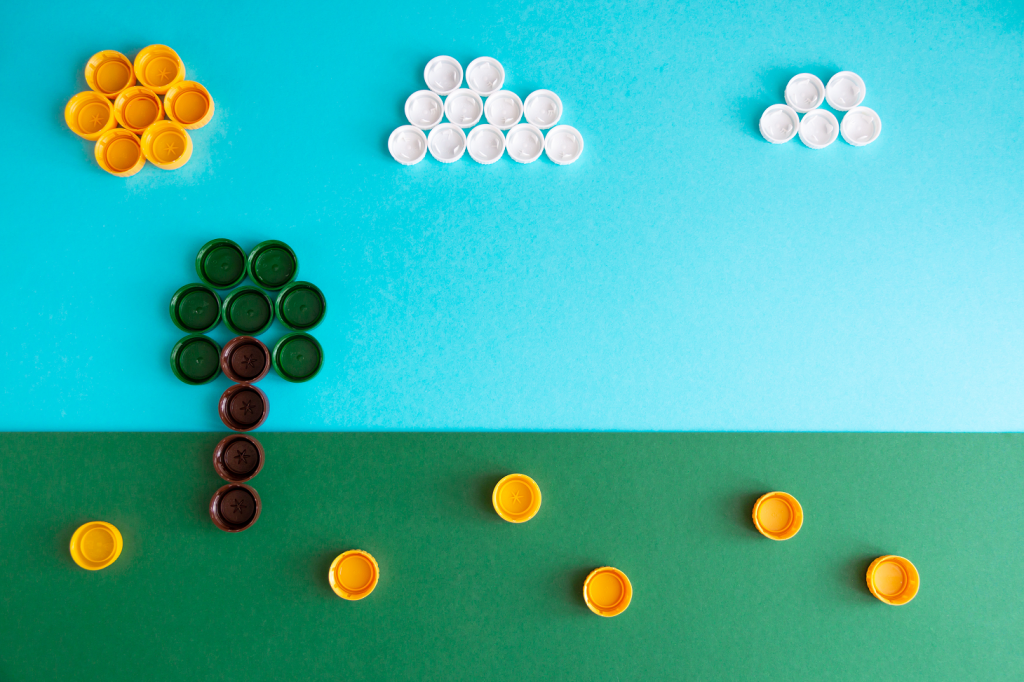
6. Make fun bottle cap art
Bottle cap art is a fun and creative way for kids to learn about sustainability. Instead of throwing away bottle caps, they can use them to make colourful and imaginative artwork. This eco-friendly project teaches them about recycling and upcycling to reduce waste. Whether they design murals or craft sculptures, bottle cap art lets kids express their talents and care for the environment. By turning simple items into beautiful art, kids can make a positive impact on the planet and have a blast doing it!
What you need:
– Bottle caps from used plastic bottles
– Paint
– Glue
– Used Cardboard box
Method
1. Cut a flat surface from one face of a cardboard box.
2. Glue a bottle lid to the cardboard and create some artwork.
3. Find some other waste that can be incorporated into the artwork such as a plastic bottle.
Teaching kids about sustainability is not only fun but also teaches them to care for our planet. Projects like recycled bird feeders, bug hotels, and vertical bottle gardens empower them to protect the environment. Doing a food waste audit and creating bottle cap art also show them how to reduce waste. By embracing these practices, kids can make a big difference and create a better future for everyone. Let’s inspire the next generation to love and care for the Earth!
